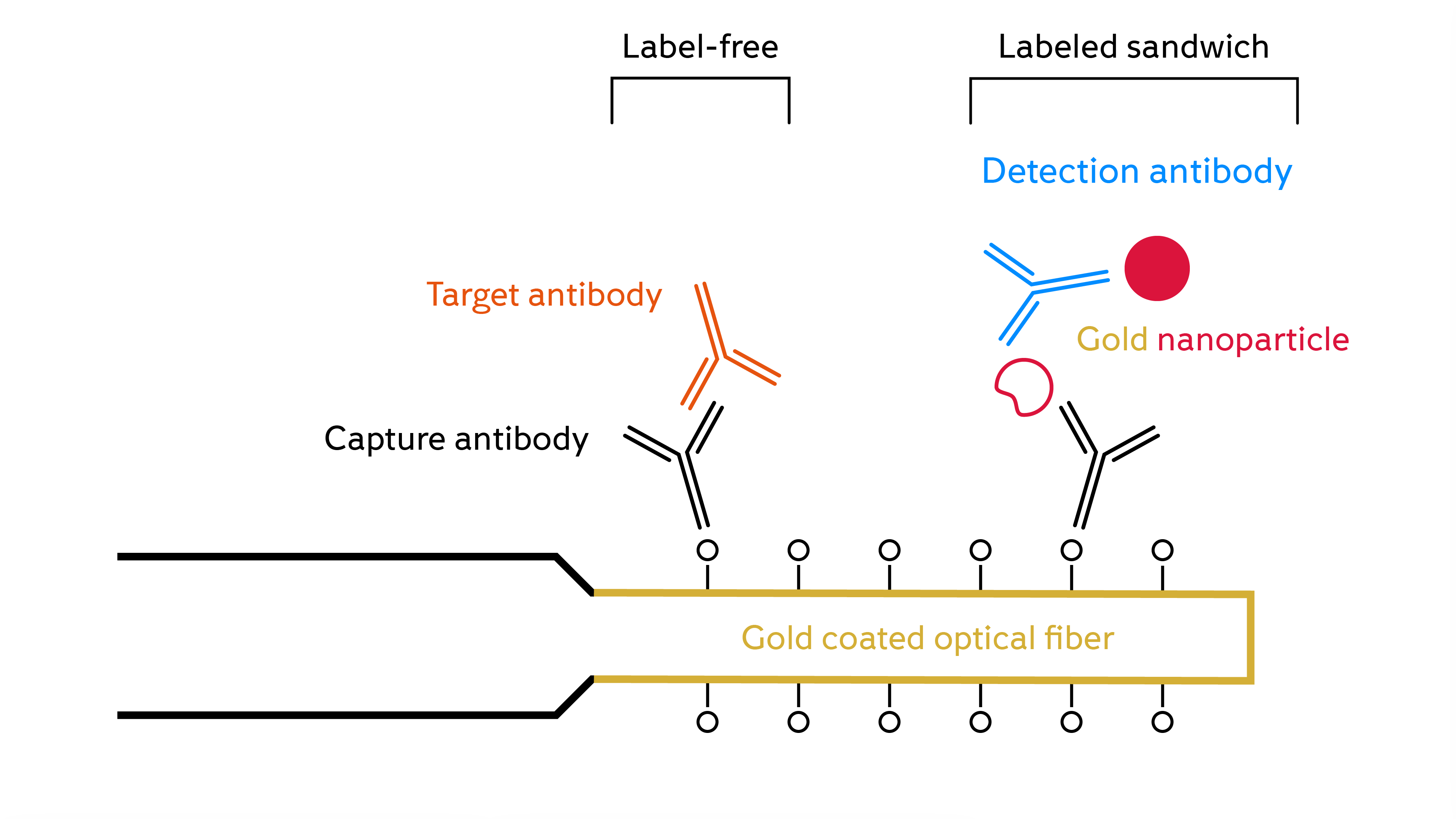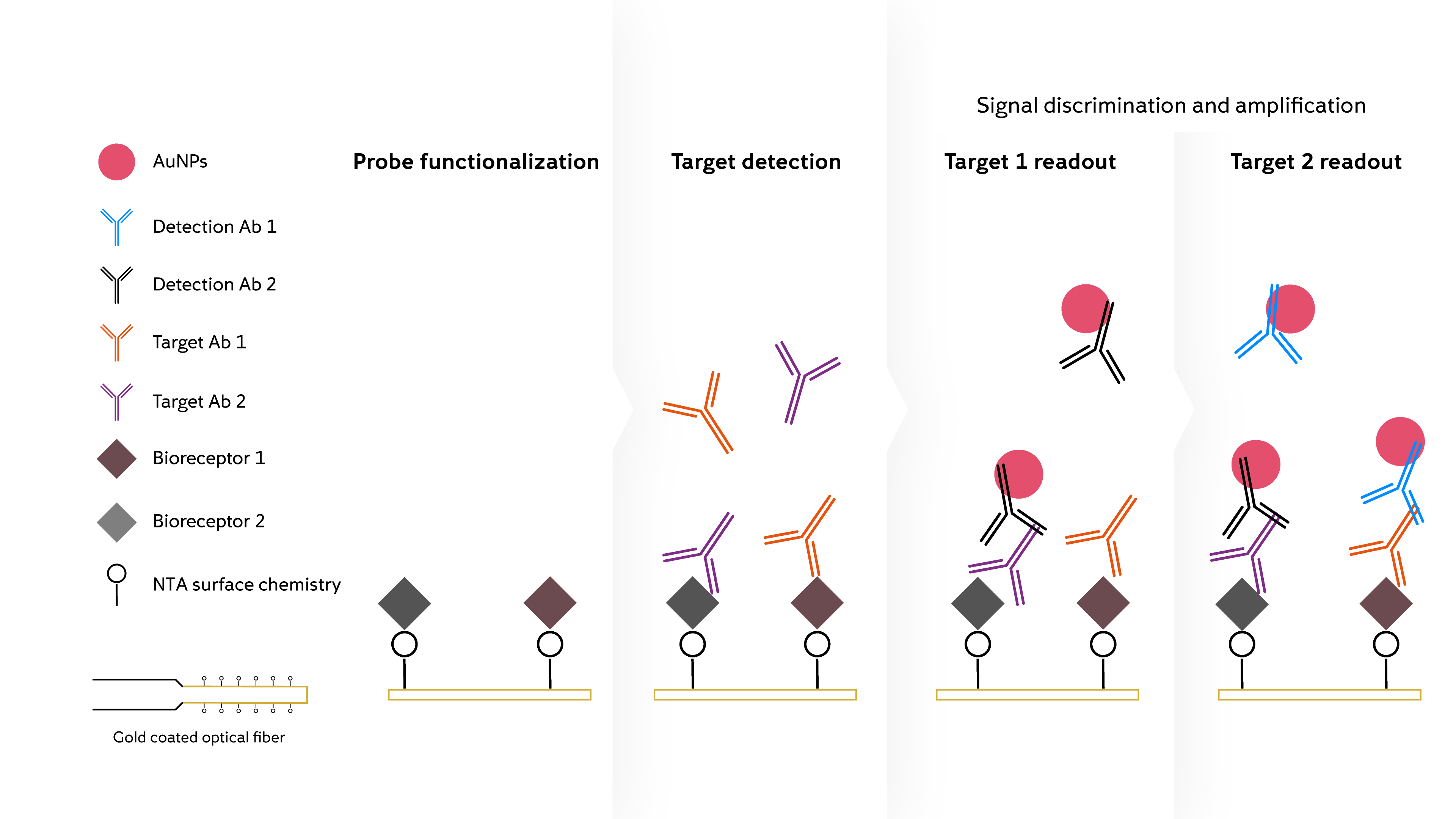The unique fiber-optic design of the WHITE FOx probe allows the implementation of sandwich-style bioassays using gold nanoparticles. This instantly amplifies the mass sensitive signal without the lengthy enzymatic reaction incubations of an ELISA, providing increased detection sensitivity and speed.
Amplifying the signal in this way allows fast, physiologically relevant detection. Therefore, the FOx BIOSYSTEMS technology can detect physiologically active levels of biologicals and biomarkers quickly and accurately, allowing you to speed up your development.



